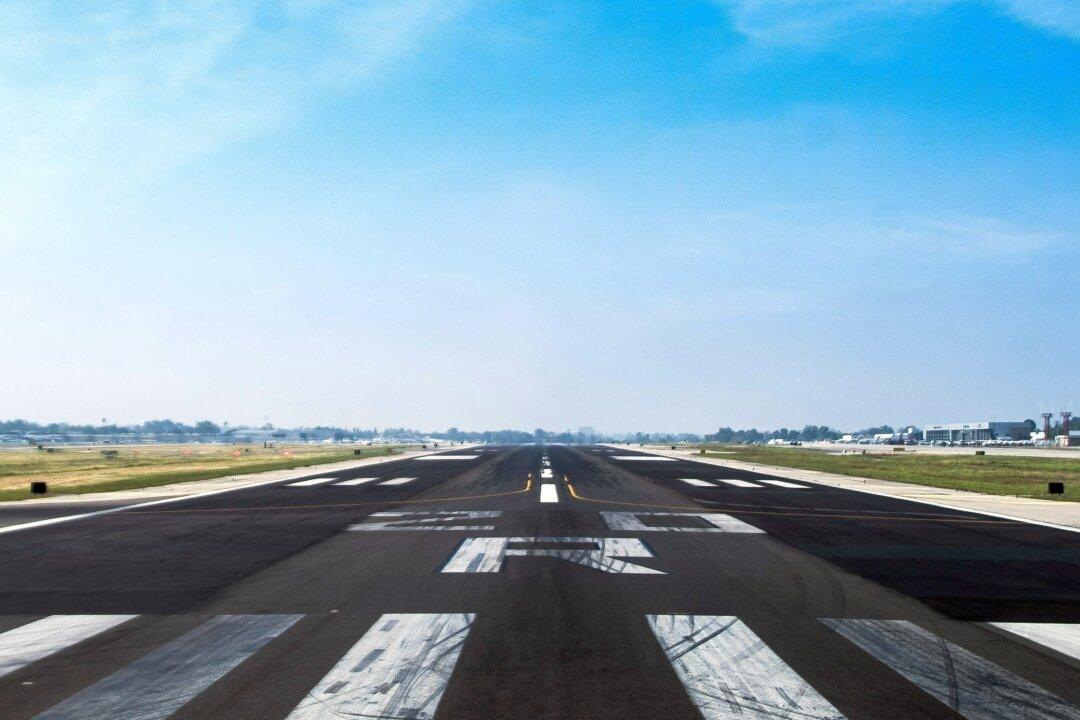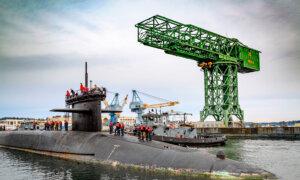Commentary
They can evade radar and penetrate enemy airspace—but America’s most advanced aircraft can’t dodge a missile on the runway.
Last month, the Pentagon deployed six B-2 stealth bombers to Diego Garcia, a remote U.S. airbase in the Indian Ocean. Within hours,
satellite images of the bombers circulated widely on social media, showing them fully exposed on the tarmac—without hangars or shelters to protect them. While the B-2 is nearly impossible to detect or destroy in flight, it is a sitting duck on the ground.
Though Diego Garcia sits far outside the immediate threat environment, the bombers’ lack of protection is a serious risk. Amid ongoing
U.S. strikes against Iran-backed Houthi forces in the Red Sea, reporting suggests Iran considered a
preemptive strike on the base. The logic is clear: the U.S. Air Force operates just
19 active B-2 bombers. Destroying the six parked at Diego Garcia would cripple the fleet—and with it,
the air leg of America’s nuclear triad.
Just a decade ago, it would have been unthinkable that a country like Iran could threaten a base as remote as Diego Garcia. But advances in ballistic missile technology and the spread of small, low-flying drones have made once-safe facilities far more vulnerable. Iran-backed Houthi forces have already
launched long-range ballistic missiles at Israel and attacked U.S. Navy and civilian vessels with
sophisticated drones. Earlier this year, Air Force leaders testified that
hundreds of unidentified drones had flown over U.S. bases and sensitive sites—evading detection and overwhelming current counter-UAS systems. The Air Force is taking these developments seriously, but it’s
still struggling to adapt.
That’s why building passive defenses—like hardened shelters—isn’t optional anymore. It’s the fastest, most cost-effective way to protect aircraft from threats that are already here. And it’s not just about the bombers we have today—without better protection, American airpower could be lost on the ground before they ever enter the fight.
Exposed on the Tarmac
Beyond the Red Sea, resourceful Ukrainian strikes have exposed a major vulnerability on the modern battlefield. Using cheap, low-flying drones, Ukrainian forces have evaded Russian air defenses and hit critical targets
deep behind enemy lines—including munition depots, bombers, and
even stealth fighters parked in the open on runways.
The U.S. military faces the same exposure. The lack of hardened shelters—constructed from reinforced concrete and steel, designed to protect aircraft from shrapnel, explosions, and other blast damage—is a long-standing problem acknowledged inside the Pentagon and extends well beyond facilities on Diego Garcia. B-2s require specialized hangars for maintenance and protection, but in recent expeditionary deployments—such as to Australia—they’ve often been
left exposed on the tarmac due to the lack of adequate infrastructure. At Andersen Air Force Base on Guam, a critical regional hub, the number of hardened aircraft shelters is insufficient to accommodate the full complement of aircraft that rotate through the base. When large air wings deploy to the region, even the
most advanced fighters and high-value tankers are routinely left exposed on open tarmacs, vulnerable to a potential first strike.
Major U.S. air hubs like Guam and Okinawa face far greater threats than drones. Their proximity to China and Taiwan places them squarely within range of Beijing’s growing arsenal of advanced ballistic missiles, making them likely first targets in any conflict.
According to
a recent report by Timothy Walton and Thomas Shugart of the Hudson Institute, just a few dozen Chinese ballistic missiles armed with submunitions could damage or destroy nearly all the aircraft parked on the ramps at these bases. As few as 5 missiles aimed at facilities in Diego Garcia could cover
the entirety of the ramp space where the B-2s are currently parked.
According to the latest estimates from the Pentagon’s China Military Power report, the PLA currently fields
hundreds of missiles capable of these strikes. Recent
high level wargames simulating a US-China conflict over Taiwan have predicted potential mass strikes from China’s arsenal—in some scenarios,
90 percent of US aircraft were destroyed on the ground rather than in the air.
Hardening the Bases
Despite these warnings, the Pentagon has lagged in building protection for grounded air forces. Findings in that same Hudson report indicate that China has
continued to race ahead: in the last decade China has built more than 400 hardened aircraft shelters, while the US has built just 22 in the Indo-Pacific. Major military facilities in Guam still
have zero hardened aircraft shelters.
Air defense for Air Force bases has historically been an Army responsibility—but the Army has been
facing its own problems in meeting the
growing demand for air and missile defenses. Though the Joint Force has historically prioritized active defenses and advanced interceptors to protect bases. But recent operations indicate that the US military
may not have the magazine depth to protect against massed, low-cost fires. Speaking recently on the viability of intercepting Chinese missile attacks with advanced interceptors, Former Secretary of the Air Force,
Frank Kendall, emphasized ”The economics just don’t work. So we need something more cost-effective than those.”
That’s where passive defenses come in. Hardened aircraft shelters are a proven, affordable solution—and should be a congressional priority. In this year’s budget request, the Pentagon requested
$406 million to procure just 12 advanced Standard Missile 3 interceptors, capable of intercepting the most advanced threats. For
the same cost, the Pentagon could build 100 hardened aircraft shelters. Both capabilities are essential, but shelters offer a far more cost-effective second line of defense—ensuring that when interceptors fail or are overwhelmed, aircraft and crews are still protected.
The solution should be hardened bases across the board, but annual military construction spending hasn’t kept pace. Infrastructure and military construction is chronically underfunded and it’s well-documented that US military bases are
literally falling apart. The
lack of real topline growth in the defense budget in recent years has prompted policymakers to
shift and defer military construction spending, exacerbating an already serious backlog. The Pentagon currently faces an estimated $137 billion backlog in funds for modernizing key facilities.
Nowhere is the gap more apparent than in the Indo-Pacific. INDOPACOM’s FY 2025 Unfunded Priority List outlined
$11 billion in unmet requirements for the region that were not included in the President’s Budget Request, including $3.3 billion for military construction alone. These include key military construction projects across the services: new Army, Navy, and Air Force facilities at frontline locations that are essential for sustaining operations in a high-end conflict.
Efforts to improve base resilience in the Indo-Pacific are receiving minimal attention. In the FY 2025 request, the Department of Defense proposed
$15.6 billion for military construction worldwide—just 1.8 percent of the total $850 billion budget request. But with only
$14.7 billion appropriated under the continuing resolution, military construction remains one of the most constrained parts of the defense budget. Despite clear operational demands, base resiliency has not moved up the priority list—particularly in the Indo-Pacific.
Conclusion
As Congress reviews President Trump’s first defense budget request and considers upcoming supplemental spending, hardening U.S. airbases must be a top priority. Next-generation aircraft like the B-21 stealth bomber and future F-47 fighter may be the
most advanced and lethal platforms the Air Force has ever fielded—but if they’re destroyed on the tarmac before takeoff, none of that will matter.
Congress should act now to fund hardened aircraft shelters, rapid dispersal infrastructure, and passive defenses across the Indo-Pacific—starting with high-value bases like Guam and Diego Garcia. Missile interceptors are essential, but shelters ensure that when defenses fail, aircraft survive to strike back. This is a proven, cost-effective investment—and one the U.S. should be making at scale. The future of American airpower depends not just on what we fly, but whether we can protect it while it’s parked.
Views expressed in this article are opinions of the author and do not necessarily reflect the views of The Epoch Times.



